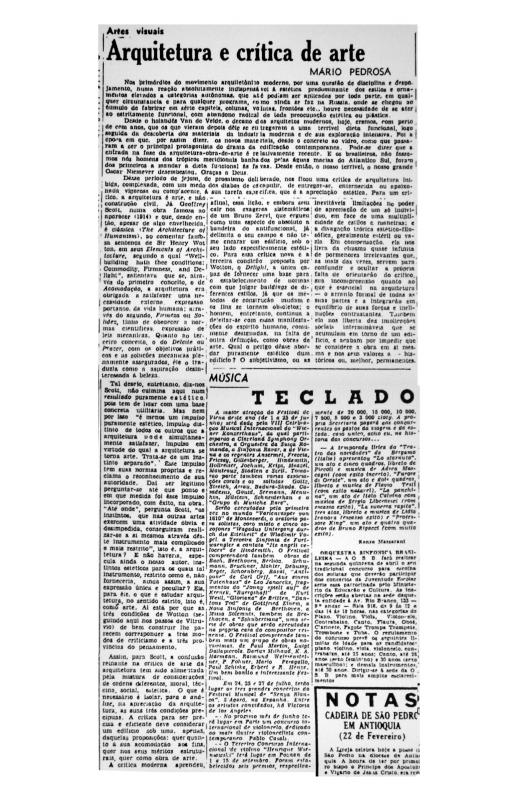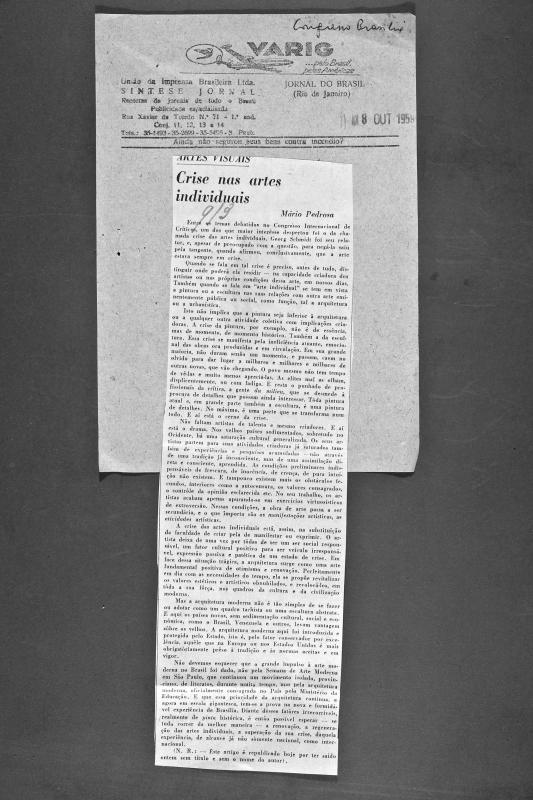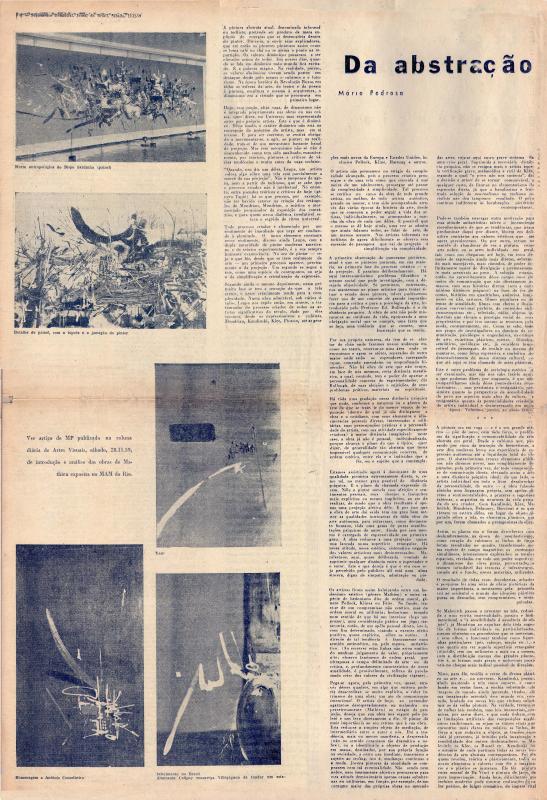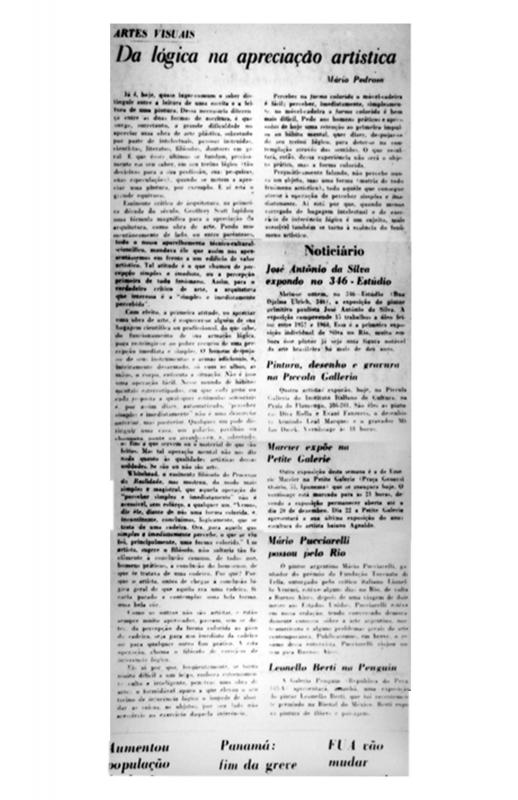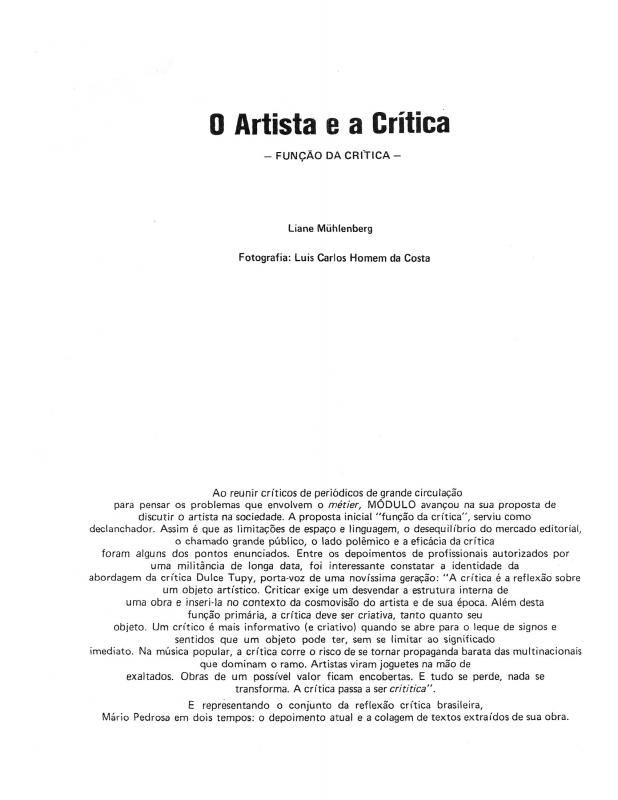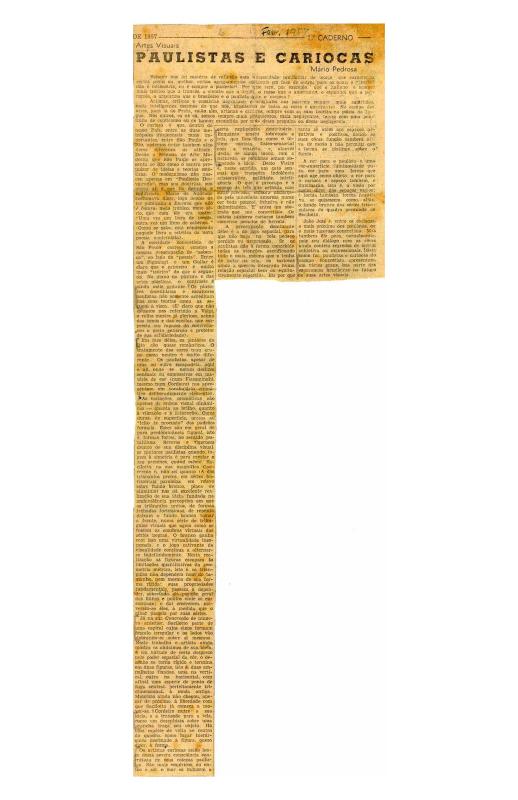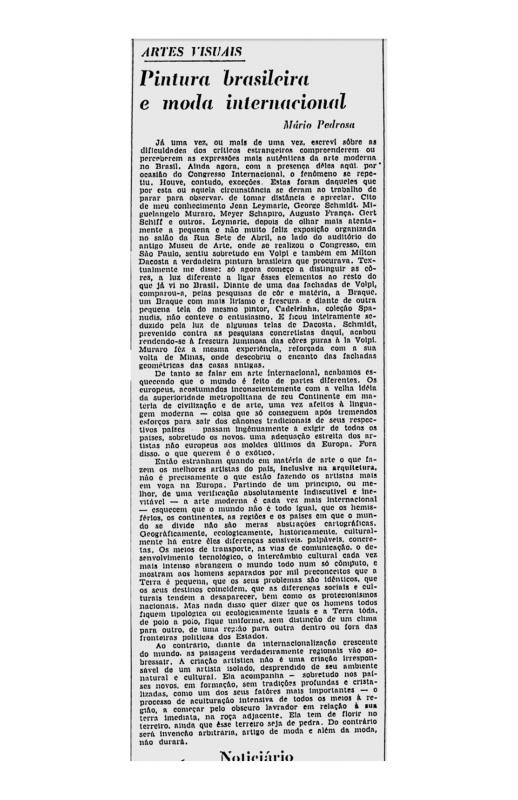Grupo Frente was one of the initial hallmarks of the constructive movement in Brazil (1954–56). Led by Ivan Serpa, it included artists such as Lygia Clark, Franz Weissmann, Lygia Pape, Décio Vieira, Aluísio Carvão, and Abraham Palatnik, all of whom were connected to the theories of Mário Pedrosa, the great advocate for abstract art in Brazil during the post-Second World War era. Although the majority of them adopted geometric abstraction, they did not exactly conform to the standards of Concrete art as developed in São Paulo by grupo ruptura (1952), which was led by Waldemar Cordeiro. This second exhibition brought to light the diversity of the group, combining the “constructivists” and the “naïf” art of Elisa Martins da Silveira. This unorthodox attitude pleased Pedrosa given his concept requiring space for the exercise of freedom. The text points out certain experimental practices of the group, the sensory nature of their works, and the materials used. At the end of the 1950s, these principals would underlie the Neoconcrete movement (1959), led by Lygia Clark, Lygia Pape, and Hélio Oiticia, among others.
Mário Pedrosa (1900–81) was an intellectual and politician, and undoubtedly the key theoretician and critic on Brazilian art of the 20th century. He began as an international politics correspondent for the Diário da Noite, and beginning in the 1920s he was affiliated with the PCB (Communist Party of Brazil). He was imprisoned in 1932 because of his political militancy (Trotskyism). During the Estado Novo of Getúlio Vargas, he lived in exile in France and New York, and only returned to Brazil after the Second World War, when he worked for the Correio da Manhã. His opposition to Stalinism led him to found the Vanguarda Socialista, a weekly publication. He presented a thesis on aesthetics called “Da natureza afetiva da forma na obra de arte” (1949) at the School of Architecture (Rio) that made use of his philosophical background, and his knowledge of Gestalt psychology; during that time he also became one of the founders of the AICA (1948) and also organized the International Conference of Art Critics (Brasilia, 1959). He wrote an arts column for the Tribuna da Imprensa (1950–54) and was an organizing member of the II and III São Paulo Biennials (1953 and 1955), later becoming director of the MAM-SP (1961–63). He served as secretary for the National Council of Culture during the brief government of Jânio Quadros. During the military dictatorship he took refuge in Chile, where he became director of the Museo de la Solidaridad in Santiago; after the Pinochet coup (1973), he left for Havana, where he served as secretary for the Museo de la Resistencia Salvador Allende. He only returned to Brazil in 1977 (at the beginning of the amnesty) and was the first to sign the manifesto creating the PT (Party of Workers, 1980). His vast library (which included eight thousand volumes) is partially available at the national library in Rio de Janeiro.
[As complementary reading, see in the ICAA digital archive the following texts by Mário Pedrosa: “Abstração ou figuração ou realismo?” (doc. no. 1085648); “Arquitetura e crítica de arte” (doc. no. 1086553); “Crise nas artes individuais” (doc. no. 1110406); “Da abstração a auto-expressão” (doc. no. 1085707); “Da lógica na apreciação artística” (doc. no. 1086587); “Debate: o artista e a crítica” (doc. no. 1110951); “Lições do Congresso de Críticos” (doc. no. 1110410); “Paulistas e cariocas” (doc. no. 1085056); “Pintura brasileira e moda internacional” (doc. no. 1126469); and “Problemas da pintura brasileira” (doc. no. 1075171)].

